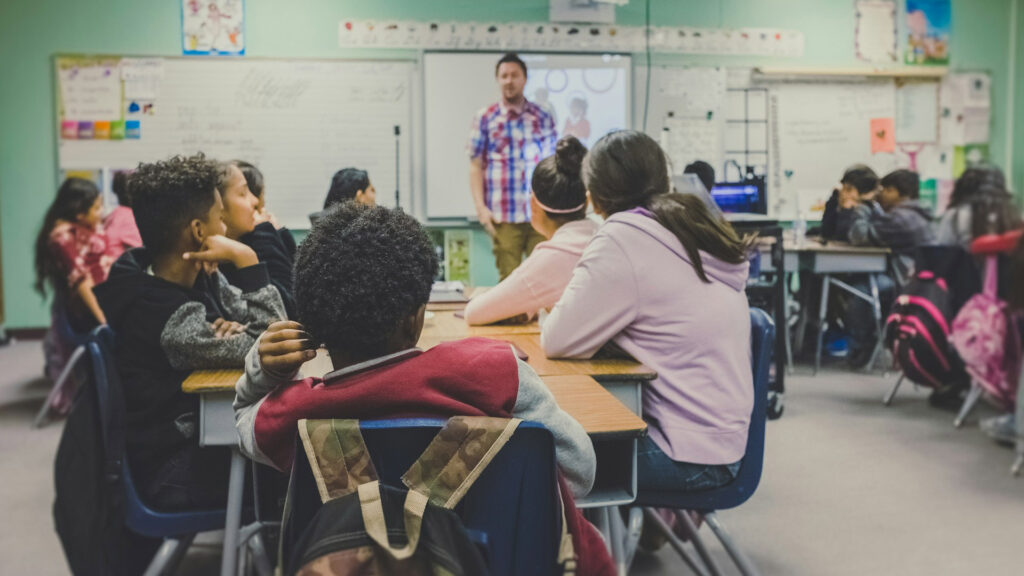Why This FY26 Budget Matters
Every year, Congress decides how much funding K-12 schools and colleges receive within the federal budget. In Fiscal Year 2026 (FY26), starting Oct 1, 2025, decisions about proposed funding levels from the Trump administration and House and Senate appropriators will impact not just K-12 districts, but also higher education — including student aid, child care for student-parents, and support students from for low-income backgrounds. These aren’t insignificant sums; they determine whether millions of students can stay in college, get enough time with faculty, afford childcare, or balance school with family obligations. Furthermore, the funding provided for P-12 education is essential for ensuring that millions of children across the country receive the academic, health, and support services necessary to learn, grow, and reach their academic potential.
The House Budget Proposal
- The House proposal directly mirrors much of what was proposed in the Trump administration’s FY26 budget: both cut overall education funding by roughly 15%. However, the House’s proposal goes even further with even more draconian cuts.
- Notable P-12 education cuts:
- Cuts and rescinds over $5 billion from Title I, the largest P-12 educational program in America that directs money to schools serving students from low-income backgrounds .
- Eliminates ALL funding — almost $900M — for English Language Acquisition, stripping crucial funding from programs that help children learn the most commonly spoken language in America to the detriment of those students, families, communities, and country as a whole.
- Eliminates nearly $3 billion in funding for teacher training and preparation despite ongoing and broad educator shortages and an overall lack of diverse educators considering the increasingly diverse P-12 student bodies they teach.
Major Cuts to Title I & Why They’re Dangerous
- Title I supports students from low-income backgrounds in K-12 with additional resources like reading/math teachers, after-school programs, summer programs, etc.
- Cuts to Title I would disproportionately hurt high-poverty, rural, and urban districts.
- Title I is one of the few federal provisions to ensure that all students have the resources to access pathways of their choice.
- Cutting Title I, included within the House proposal, undermines civil rights and fairness in education
Higher Education at Risk
Here’s what is on the chopping block for higher education, and why these programs and grants matter:
- SEOG (Supplemental Educational Opportunity Grant): helps students with very limited income, on top of Pell Grants. Removing SEOG means fewer resources for students who are already stretched thin.
- Postsecondary Student Success Grant Program: This program funds evidenced-based student success programs at a variety of public 2- and 4-year colleges and universities. These programs provide wraparound supports and other interventions that keep students on track to graduate.
- CCAMPIS (Child Care Access Means Parents in School): This program provides child-care support for the roughly 1 in 5 college students who are also parents, so they can attend classes and graduate. Its elimination would force many to choose between family responsibilities and education.
These cuts are not just line items. They reshape who can afford to go to college, who can finish, and who gets left behind. Here’s a quick synopsis of how this plays out in Higher Education.
The Senate Budget Proposal
- The Senate education proposal rejects the Trump administration’s budget and the similar House proposal in many aspects. Major programs that help students from low-income backgrounds and students of color at the K-12 and higher education level are funded at essentially the same amounts as the prior year, and the harmful cuts detailed above are not included. This proposal does not increase investment and is less than our students deserve, but it represents a bipartisan compromise that is the best path forward in the immediate term. And the Senate budget proposal includes CCAMPIS.
Why These FY26 Budget Cuts Are Harmful & Cruel
- For low-income or first-generation students, supports like PSSG, SEOG, and CCAMPIS aren’t luxuries — they’re lifelines.
- Title I funding is indispensable to the academic and economic well-being of millions of underserved students
- Removing or slashing these programs and others amplifies inequality: those already with fewer resources will bear the heaviest burdens.
- Cutting investments in K-12 and higher education in the same budget means a double-hit: students lose in the foundational years and struggle to access or complete college.
Explore How the FY26 Budget Impacts Your Community
We understand having three budget proposals is confusing. That’s why we’ve created a new interactive tool that shows what’s at stake for every state and district if the President’s, House’s, or Senate’s FY26 proposals are adopted. We crunched all the numbers for you, so can explore the impact on high-poverty, urban, and rural districts to see exactly how much funding your local schools stand to lose.
Go to the Budget Tool
